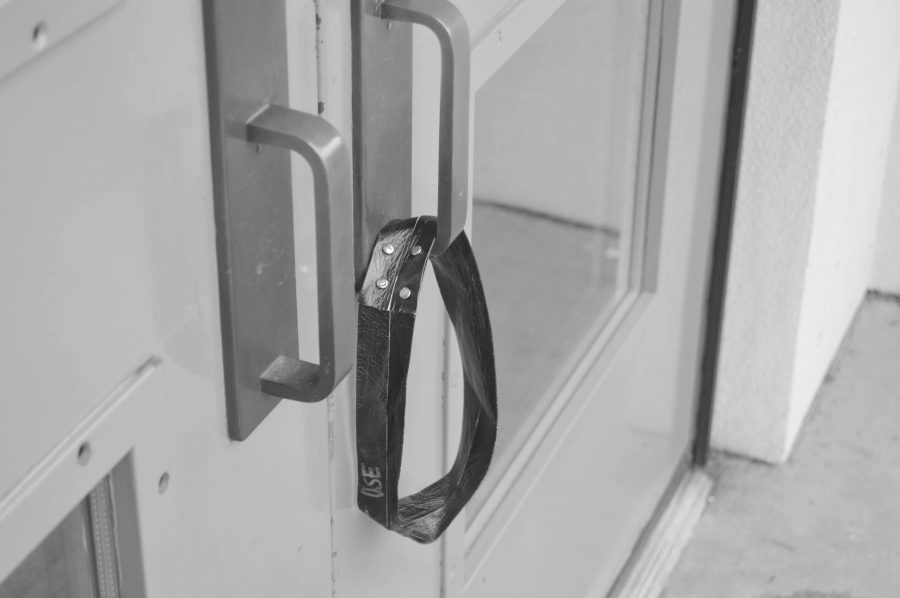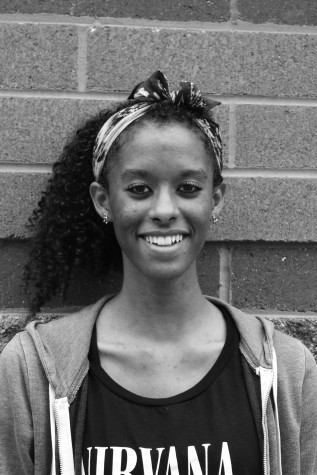“Men, their rights and nothing more; Women, their rights and nothing less:” this was a famous quote from suffragist Susan B. Anthony during the Progressive Era.
Though women’s roles in society were arguably more limited in the past than they are now, women still believe that they are not treated as complete equals.
Kristin Gerhardt, who primarily teaches American Studies II, states that the struggle for women’s equal rights is still a work progress.
“Discrimination is interwoven within our culture and it is hard to get away from. A boy does something stupid and what do people say? ‘Boys will be boys.’ A girl does something stupid, ‘She should have been smarter.’ There is no ‘Girls will be girls,’” Gerhardt said.
Despite the long journey of equal rights for women, Gerhardt says that there has been evidence of improvement.
“There are elements that show women in society have come a long way. I was born in 1980 and I was one of the first generation of women where I truly believe that we were told we could do anything. I could be the doctor, the lawyer, the astronaut, the teacher, etc.,” Gerhardt said. “If I was willing to work hard enough, I could have any job I wanted and I think that was one of the first times in American history where that was really true.”
Gerhardt states that the more subtle forms of gender roles and stereotypes are still present in pop culture.
“If you look at music culture from the 1940s, you have the male singer like Bing Crosby or Frank Sinatra with the big voice out front. Then you have the backup of women singing behind them, looking pretty,” Gerhardt said. “That has lasted all the way through today. Look at modern videos of rap or rock. You will see a lot of the man standing out front and then the women are objects around him.”
American Studies II teacher Brooks Hazen states that feminism was not always thought of in a positive light.
“I think feminism in the ‘70s was more of a negative term. A feminist was thought of as someone who was aggressive and someone who was kind of pushy,” Hazen said. “Whether people think of it in a positive way or in a negative way, I think feminism has led women to believe that they can have both a family and a career. If it were not for feminism, that probably would not be the case today.”
As for the action that women are taking to pursue complete equality and acceptance, Gerhardt believes that there should be more young women involved in the movement than there currently are.
“What I would really like to see today is a lot of pushback coming from young women about things like the dress code. In an average dress code there are two lines for males. There is a laundry list of what women cannot do. They cannot show spaghetti straps, they cannot show midriffs, their skirts have to be a certain length and the list goes on,” Gerhardt said.
Hazen addresses some of the more subtle influences modern music can have on the way people view women.
“Some of the music that is out now degrades women so much and it almost becomes acceptable. I just think of how it molds the minds of the younger people. The music plays a big role and I think that will be the next struggle. The younger generations have lost some of their sensitivity to certain matters,” Hazen said.
However, Gerhardt believes that the emergence of more female lead singers have begun to change those familiar pop culture images.
“Now that is starting to change. Adele just apparently broke every record there ever was in terms of sales with her new album and she is a woman. Yes, there are backup singers but she is an independent, solo act. If you turn on the radio, it sounds like there is a fair balance of male and female artists,” Gerhardt said.
Gerhardt states that the influence from media is not strictly limited to music culture.
“You can get information from the radio, you can get information from television, you can get it from movies and you can get it from magazines or social media. We are almost drowning in information and it can be scary. To an extent, we are seeing a lot of the same things being repeated over and over,” Gerhardt said.
Hazen believes that even though there are some positives to be found in the influence media has had in society’s perspective on women, the negative influences seem to receive more attention.
“You can find the positives in media; however I just think the negatives are more in your face. People are just bombarded with the negative. There is relief every so often when a public figure comes along who does not fit that ideal image,” Hazen said.
According to Hazen, social media can also play an important role in the way society views women.
“I love sharing those videos on Facebook of what a woman looks like in a photoshoot before and then after in the actual finished product with all the tweaks and other things they had to do to make her look ‘perfect.’ I think that is absolutely ridiculous. It is just media putting pressure on women to fit a certain mold,” Hazen said.
Gerhardt states that there is one particular stereotype of women that is persistently projected by the media today.
“A stereotype we still see on television today is the beautiful idiot. You do not see the male version of that. There is no hot, stupid guy archetype,” Gerhardt said.
Though there is still a lot of change to come in the pursuit of equality of the two genders, Hazen emphasizes what feminism has successfully accomplished in the past.
“Feminism to me is women striving for, not always equality but acceptance. Obviously it is hard for me to say as a male but I like to think that women in society today have so much more choices compared to women in the past,” Hazen said. “I think if we look at the feminist movement as a whole, one of the things it has given is the opportunity for women to determine their own outcome.”
Despite the accomplishments feminism has made, there is still the issue of the pay gap that continues to exist between men and women’s wages. However, Hazen reveals that the pay gap in tennis is almost nonexistent.
“I am the tennis coach here at PHS and tennis is really one of the only sports out in the world where there is equal pay. I am not saying that every tennis tournament gives equal pay but in the tennis world, the Big Five tournaments they have yearly are equal pay,” Hazen said.
As for why the pay gap originally began, Hazen provides a more traditional theory that was commonplace during the time when women first began entering into the workforce.
“In a way I think I understand why it has always historically happened. One of the more traditional ideas behind it is, why invest equal pay for a female employee when she may all of a sudden quit and start a family? Traditionally, I think that is why women were always kept at lower pay but that has changed now and I do not think that that is a valid reason to continue that practice now,” Hazen said.
In terms of equality and gender roles, Gerhardt states that the marginalization of people based on their gender goes both ways.
“I really hope in my lifetime that society gets to a point where men will go to a female mechanic and not make snarky comments. I really hope we get to a point in society where we have a male nanny and people do not make nanny jokes. It is not just men looking at women a certain way, it is women looking at men a certain way as well,” Gerhardt said.
As for the history that has led women in society to advance so far, Hazen states that there is a need for more appreciation of the events that have shaped the country we live in now.
“I wish more students would appreciate the history of some of these movements because some kids do not believe that these movements are even an issue today,” Hazen said. “Students should look at the big picture of what has come before them and understand that there might be reasons why people feel differently than they do. Students should appreciate the difference, yet strive for acceptance.”



